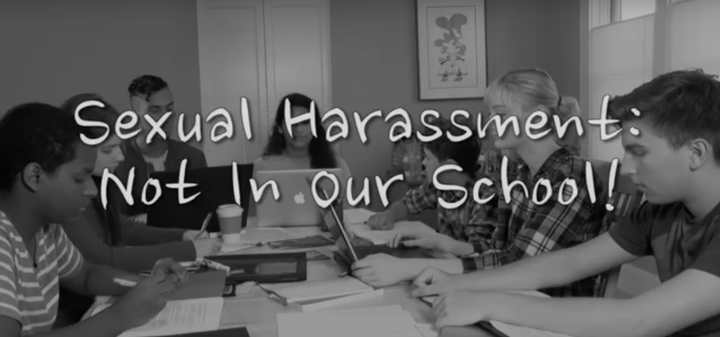
View at SSAIS.org/video
Sexual harassment and assault are forms of sex discrimination and they occur at alarming rates in K-12 schools. Recent reports like “Hidden horror of school sex assaults revealed by AP” and “Ending Sexual Harassment and Assault: Effective Measures Protect All Students” confirm just how rampant these problems are. The attention afforded to transgender students’ rights should also prompt us to broaden our understanding of sex discrimination, a serious problem for all students. Students’ civil rights are violated daily because schools are failing to fulfill their responsibilities under Title IX, a federal civil rights law.
Researchers, national gender equity organizations, and the CDC have provided sufficient data to demonstrate how sexual harassment and assault negatively impact K-12 students. Yet the public remains in the dark because these violations are under-reported by students, who have been forced to normalize sexual harassment, and by schools guarding their reputations. It’s not surprising that national studies show a glaring discrepancy between the small number of schools reporting incidents of sexual harassment and the large number of students saying they experience it.
Sex discrimination, sexual harassment, and sexual assault are community problems. Research shows that the majority of teenage students have been affected by peer sexual harassment but rarely seek help. Because schools frequently discount or dismiss reports of sexual harassment or assault, students are discouraged from reporting; many of these victims become perpetrators of sexual harassment. By failing to properly address sexual harassment, schools foster a climate where sexual harassment and assault occur. Sexual violence on college campuses and sexual harassment in the workplace occur because students are afforded ample opportunity to practice these behaviors in their formative years.
Title IX prohibits sex discrimination in federally funded educational programs. But few families understand the broad protections the law affords beyond ensuring equal athletic opportunities. After our tenth grader was raped on a high school field trip, we also had no idea that Title IX required the school to take specific actions. The nightmare of sexual assault was exacerbated by the school’s failure to implement Title IX. By the time we learned of our daughter’s rights it was too late for the required prompt and equitable investigation; by then the school district had acquired “alternate facts.” Betrayed by our school, we brought a US Department of Education investigation to the Seattle school district. Using the national attention our case received, we spearheaded a national movement to educate the public about sex discrimination in K-12 schools. From our work with families across the country and national gender equity organizations, we cannot overemphasize the urgent need for Title IX compliance.
With the Trump administration and Department of Education leadership, we cannot expect vigorous Title IX enforcement from the Department’s Office for Civil Rights (OCR). Since we can’t count on federal oversight we must compel compliance through community engagement. The solution requires a massive grass roots education effort to inform families, schools, and local organizations about schools’ responsibilities, students’ Title IX rights, and recourses when schools fail, we told the Washington Post last year.
To fill this need, the national nonprofit Stop Sexual Assault in Schools created comprehensive free education for the K-12 audience, Sexual Harassment: Not in Our School! The streaming video and action plan model a collaborative effort where students work alongside parents and community organizations to create Title IX compliant schools. It follows a high school gender equity club strategizing to address sex discrimination, interviewing nationally recognized education, legal, and LGBTQ experts, and learning from counselors, advocates, parents, and peers. In one enlightening scenario, students watch San Francisco Unified’s Title IX Coordinator, attorney Keasara Williams, properly address a parent-actor’s complaint—an important model for Coordinators who remain largely untrained. One student concludes that, “When we make change at school, we’re changing society too.”
When the school and local community implement the recommended actions, they will reduce the traumatic effects of sexual harassment and assault, ensure better outcomes for students, and address behaviors that lead to sexual assault on college campuses and sexual harassment in the workplace. Sex discrimination, in its many manifestations, is the 21st century civil rights issue for students. In these uncertain times, we must arm communities with Title IX education now.
Related: